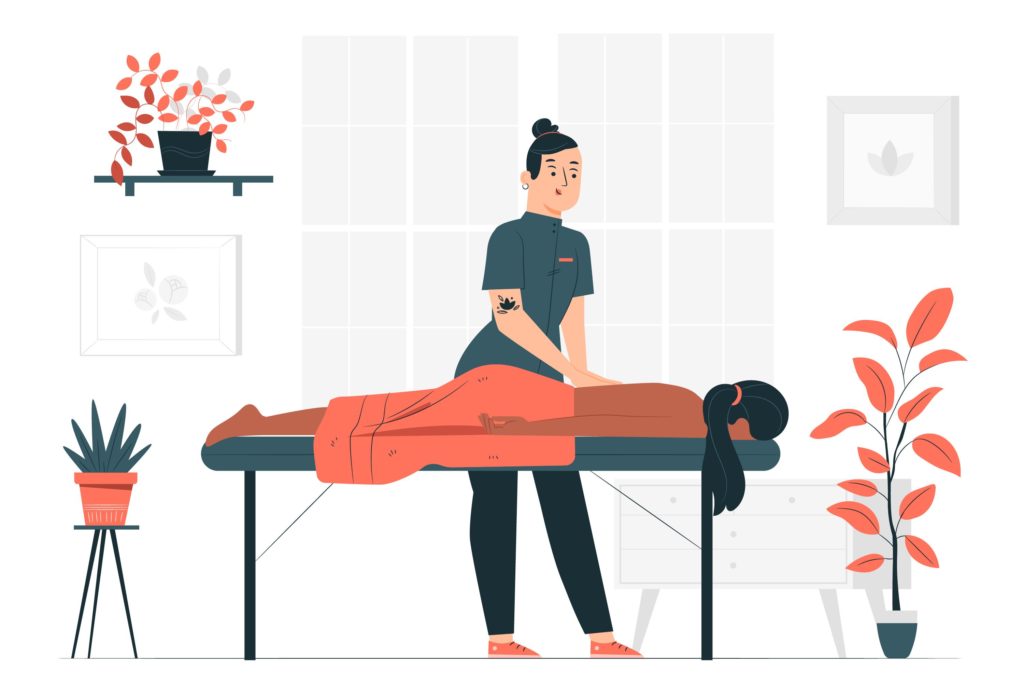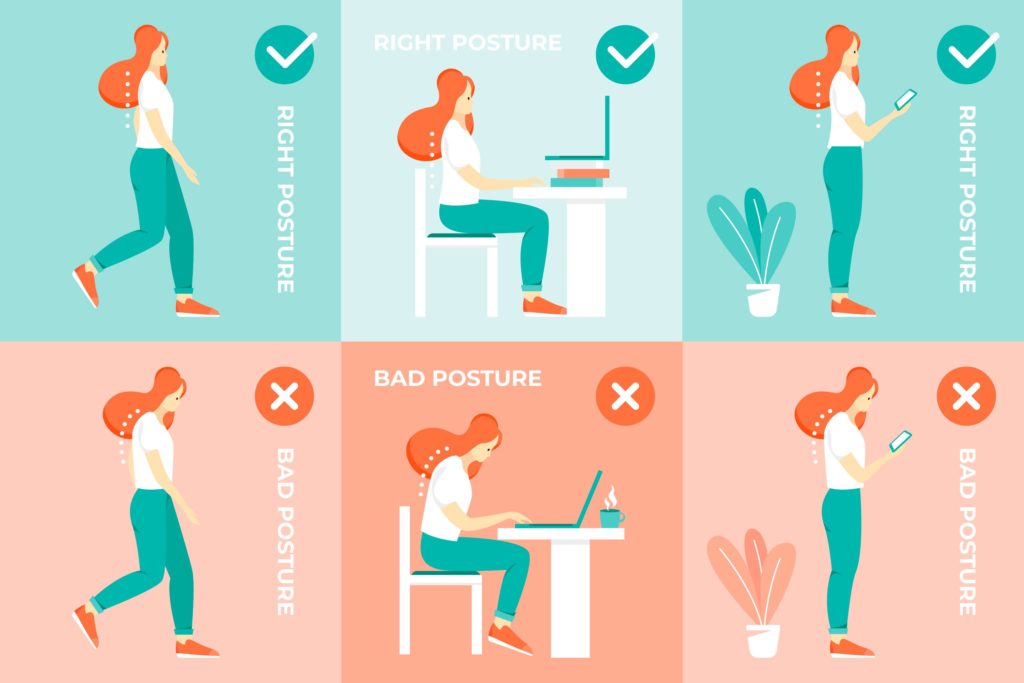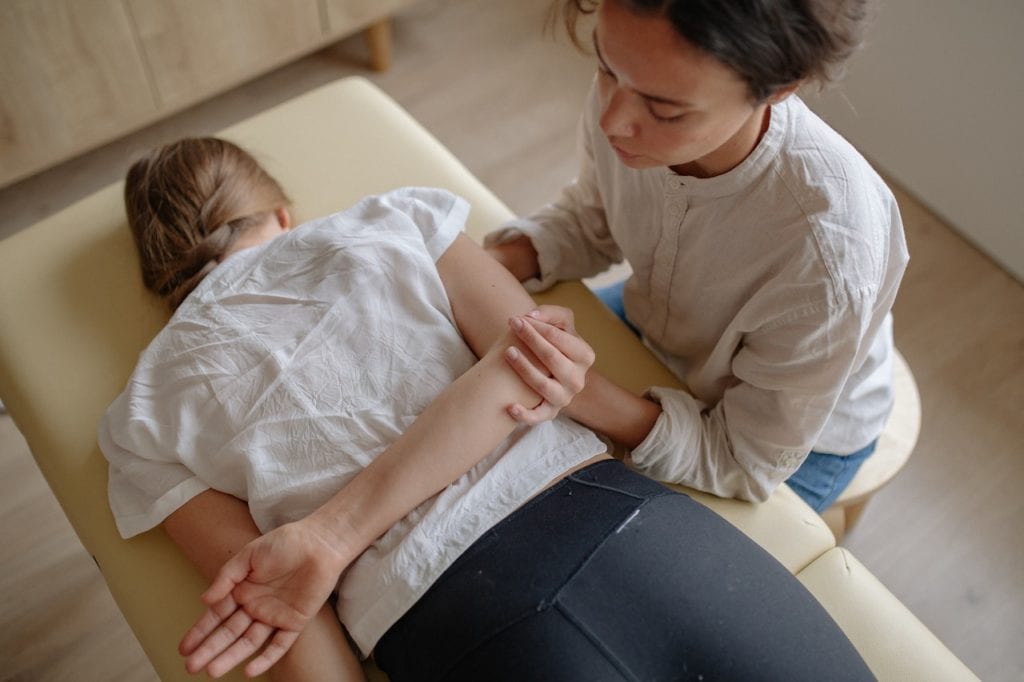
Upper back pain is a common complaint among adults of all ages. Poor posture, strained muscles, and injuries are just a few of the causes. When upper back pain strikes, it can be difficult to know what to do. Fortunately, there are several steps that individuals can take to alleviate their discomfort and prevent further injury.
Finding the source of the discomfort is crucial in the first place. If the pain is due to poor posture, individuals should focus on correcting their posture and taking frequent breaks to stretch and move around. If the pain is due to muscle strain, individuals should rest the affected area and avoid activities that exacerbate their discomfort. Pain and inflammation can also be lessened by applying heat or ice to the injured area.
In some cases, upper back pain may be a sign of a more serious underlying condition. If the pain is severe, accompanied by other symptoms such as numbness or tingling, or does not improve with self-care measures, individuals should seek medical attention. A healthcare provider can perform a physical exam and recommend appropriate treatment options, such as physical therapy, medication, or surgery if necessary.
Immediate Relief
When experiencing upper back pain, immediate relief can be crucial to help manage the discomfort. There are a few methods that can be used to help alleviate the pain, including stretching, heat or cold therapy, and massage.
Stretching
Stretching can help relieve tension and stiffness in the upper back muscles. Some effective stretches include:
- Shoulder Blade Squeeze: Sit up straight and gently squeeze your shoulder blades together. Hold for 5-10 seconds and release.
- Chin Tucks: Sit up straight and gently tuck your chin towards your chest. Hold for 5-10 seconds and release.
- Upper Trapezius Stretch: Tilt your head to one side and gently pull your ear towards your shoulder. Repeat on the opposite side after holding for 5 to 10 seconds.
Heat or Cold Therapy
Heat or cold therapy can help reduce inflammation and ease muscle tension. Applying a heat pack or a cold compress to the affected area can provide relief. Some people find that alternating between heat and cold therapy is most effective.
Massage
Massage can help alleviate tension and soreness in the upper back muscles. A professional massage therapist can provide a deep tissue massage to target specific areas of pain. Alternatively, a foam roller or massage ball can be used to apply pressure to the affected area.
It is important to note that these methods may not work for everyone and it is always best to consult with a healthcare professional if the pain persists or worsens.


Long-Term Relief
When experiencing upper back pain, it is important to seek long-term relief options to prevent future occurrences. Here are three effective ways to achieve long-term relief:
Exercise
Exercise is crucial in preventing and reducing upper back pain. Strengthening exercises for the upper back muscles can help improve posture and reduce strain on the back. Some exercises that can help alleviate upper back pain include:
- Shoulder blade squeeze: Sit upright with your arms by your side. After five seconds of squeezing your shoulder blades together, release them. Repeat this exercise ten times.
- Wall angels: Your arms should be at a 90-degree angle while you stand with your back to a wall. Slowly raise your arms above your head and then back down. Repeat this exercise ten times.
- Cat-cow stretch: Get on your hands and knees and arch your back while exhaling. Then, inhale and round your back. Repeat this exercise ten times.
Posture Correction
Upper back pain is frequently a result of poor posture. Correcting your posture can help reduce the strain on your upper back muscles. Here are some pointers for better posture:
- With your feet flat on the floor and your shoulders back, sit up straight.
- Keep your computer screen at eye level to prevent hunching over.
- Use a chair with good lumbar support to maintain the natural curve of your spine.


Ergonomic Adjustments
Making ergonomic adjustments to your workspace can also help alleviate upper back pain. Here are some adjustments to consider:
- Use a headset or speakerphone instead of cradling the phone between your ear and shoulder.
- Adjust your chair height so that your feet are flat on the ground and your knees are level with your hips.
- Place a cushion or pillow behind your back to provide additional support.
By incorporating these long-term relief options into your daily routine, you can help prevent and alleviate upper back pain.
Medical Treatment
When dealing with upper back pain, medical treatment may be necessary. Here are some common medical treatments for upper back pain:
Chiropractic Care
Chiropractic care involves the manipulation of the spine to alleviate pain and improve mobility. Chiropractors may use spinal adjustments, massage, and other techniques to help relieve upper back pain. A study published in the Journal of Manipulative and Physiological Therapeutics found that chiropractic care can be effective in reducing pain and improving function in patients with upper back pain.


Physical Therapy
Upper back pain can be effectively treated with physical therapy. A physical therapist can work with you to develop a personalized exercise program to help improve your posture, strengthen your muscles, and reduce pain. They may also use techniques such as massage, heat therapy, and electrical stimulation to help alleviate pain and improve mobility.
Medication
Medication can be used to help manage upper back pain. Over-the-counter pain relievers such as acetaminophen and ibuprofen can be effective in reducing pain and inflammation. If over-the-counter medications are not effective, your doctor may prescribe stronger pain medications or muscle relaxants. It is important to follow your doctor’s instructions when taking medication, as some medications can have side effects or interact with other medications.
Medical treatments can be an effective way to manage the upper back pain. Chiropractic care, physical therapy, and medication are all options that can help alleviate pain and improve mobility. It is important to work with your doctor to determine the best course of treatment for your specific condition. By implementing these simple tips and techniques for relief and prevention, you can help alleviate and avoid upper back pain in your daily life.
